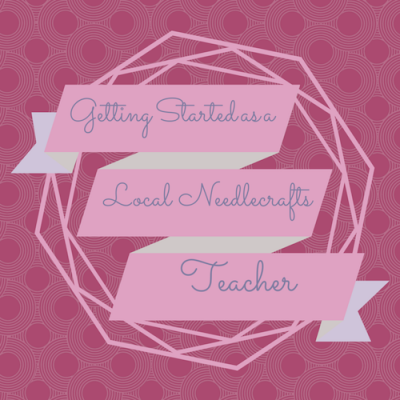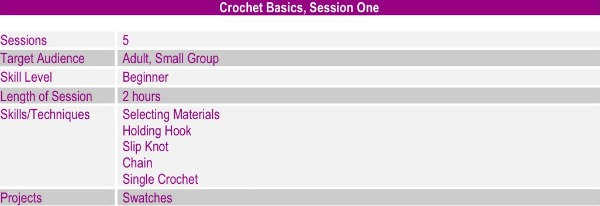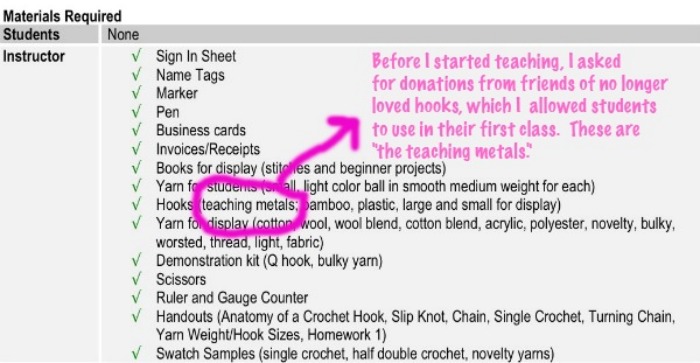If you are following this series of posts, you did a self-check to see if you are ready to teach, thought about whether to get a needlecrafts credential, scouted out some possible teaching spots, and considered various ways of marketing your classes.
 Update: This series is a great introduction to teaching, but since I originally wrote it in 2011, it has become outdated. If you’re looking for a more robust (and updated) approach to teaching, check out my book, Make Money Teaching Crochet: Launch Your Business, Increase Your Side Income, Reach More Students.
Update: This series is a great introduction to teaching, but since I originally wrote it in 2011, it has become outdated. If you’re looking for a more robust (and updated) approach to teaching, check out my book, Make Money Teaching Crochet: Launch Your Business, Increase Your Side Income, Reach More Students.
Now you need to get yourself ready for that very first class. Preparing for class seems to fall along a continuum. There are some people on one extreme, completely winging it. On the other side, you have the teachers who have planned out every second of the class time. I fall somewhere in the middle, but in my early days as a teacher, I was more inclined to over-prepare. (By the way, I think”winging it” generally leads to sub par teaching, which leads to unhappy students, which leads to bad word-of-mouth…)
I’ve mentioned that I am a CYC certified crochet instructor and teacher. As part of the certification process, you must complete 30 hours of teaching. One way I completed this requirement was to develop a five week beginners class which I offered for free to several friends, classmates, and co-workers. It was held in my home (in spite of my general fears of teaching from home).
I started by developing an overall outline for the course. Then for each lesson I created a list of goals (skills or techniques I wanted students to learn),

an outline agenda,

and a list of supplies.

I even went as far as to write out step-by-step instructions for each thing I taught. This wasn’t so that I would read off the paper like a really bad college professor, but so that I could remind myself before the class of the small steps which make up each part of each bit of crochet mechanics.
These days, I don’t need quite as much prep for the beginner classes I teach. I do still follow the same preparation process whenever I develop a new class or a new lesson.
Handouts
I like to prepare handouts for students that they can refer to at home. I start with a swatch of the stitch I’m teaching that day, which I usually scan.

Then I write out some directions. As a CYC certified instructor and teacher, I can also use the illustrations in the manual for my handouts.

Your handouts should also include your contact information so that your students can find you again later for support, future classes, or to refer to a friend.

Giveaways:
Once you are more established, you may want to consider an inexpensive giveaway for your students. This is especially helpful if you are teaching private lessons and you aren’t affiliated with a yarn shop or other corporate entity. If you customize the giveaway, it can require significant advanced planning.

